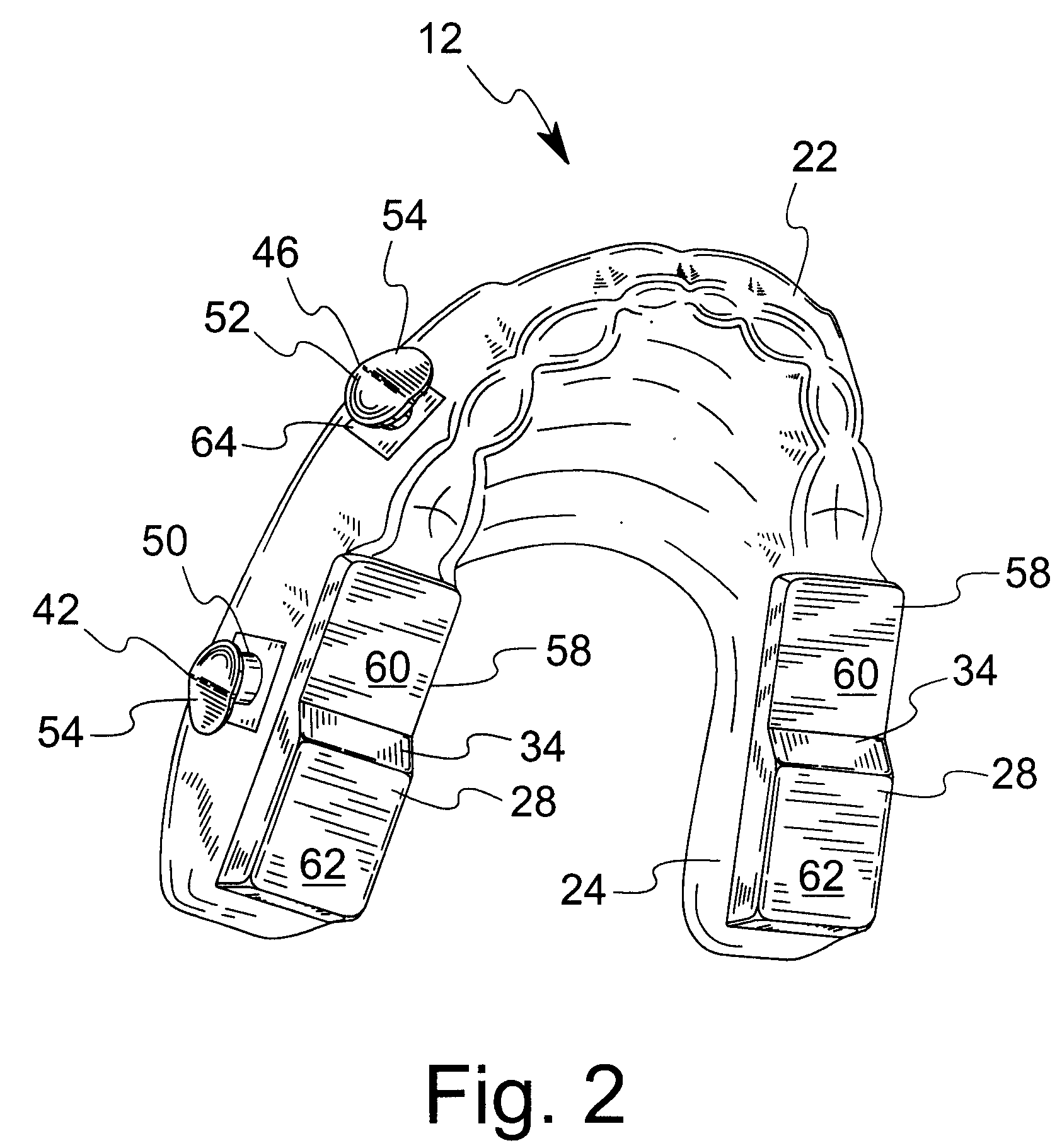Anti-retrusion oral appliance
a technology of oral appliance and anti-retrusion, which is applied in the field of surgery, can solve the problems of blockage, low jaw and tongue fall back, and noise known as snoring, and achieve the effect of reducing the number of blockages and reducing the number of patients
- Summary
- Abstract
- Description
- Claims
- Application Information
AI Technical Summary
Benefits of technology
Problems solved by technology
Method used
Image
Examples
Embodiment Construction
[0026]With reference to the drawings, the invention is an oral appliance 10 for the treatment of sleep apnea, snoring, and sleep bruxism in a human user in need of such treatment. This appliance is designed to maintain the airway in open condition through vertical repositioning of the lower jaw with advancement as required. The appliance is composed of two parts, an upper component 12 and a lower component 14. Each part is fitted to conform to the user's teeth of the respective upper or lower jaw. An elastic member 16 is applied to each side of the appliance, joining the upper and lower components while permitting the lower jaw to move during sleep.
[0027]The appliance 10 is adjusted to this limiting position by locating a pair of the interacting stops or bite pads 28, 30 in the posterior of both the right and left sides of the appliance 10. The upper and lower bite pads are configured to contact one another in such a way that the mandible and tongue are prevented from falling back a...
PUM
 Login to View More
Login to View More Abstract
Description
Claims
Application Information
 Login to View More
Login to View More - R&D
- Intellectual Property
- Life Sciences
- Materials
- Tech Scout
- Unparalleled Data Quality
- Higher Quality Content
- 60% Fewer Hallucinations
Browse by: Latest US Patents, China's latest patents, Technical Efficacy Thesaurus, Application Domain, Technology Topic, Popular Technical Reports.
© 2025 PatSnap. All rights reserved.Legal|Privacy policy|Modern Slavery Act Transparency Statement|Sitemap|About US| Contact US: help@patsnap.com



